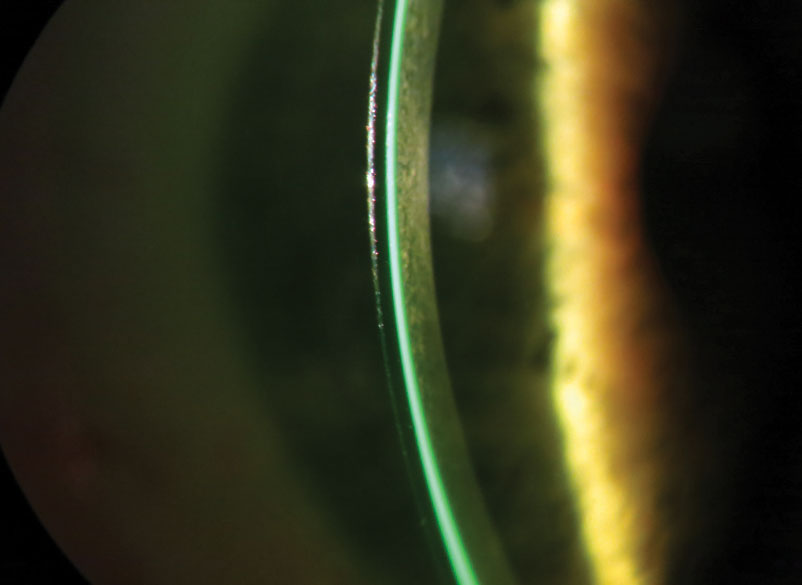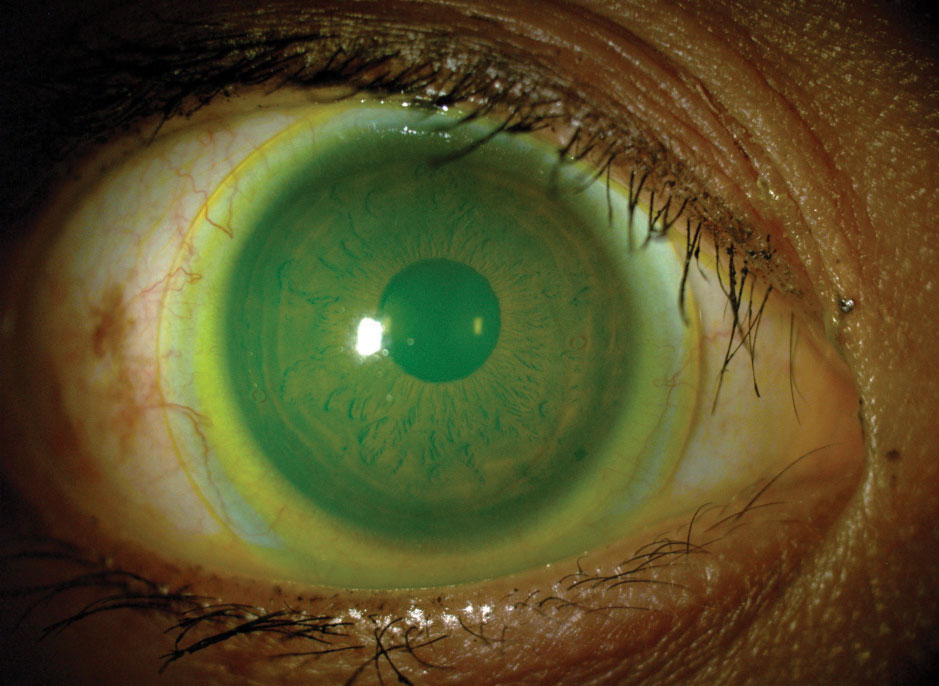 |  |
Specialty contact lenses have grown in popularity over the past few years. Despite this rise, for many, the idea of incorporating a new service into an established office is intimidating. The thought of learning how to fit something new and to manage complex patient conditions alone can seem impossible. Starting anything from the ground up can be a challenge; however, incorporating a unique niche into your practice can be both financially and emotionally rewarding. Ultimately, if you have the passion to change lives with specialty lenses and the desire to grow your practice, patients will find you.
First Steps
Do you want to start incorporating specialty lenses in your office but do not know where to start? Whether you are adding orthokeratology, custom soft lenses or scleral gas permeable (GP) lenses, it is important that you do your homework, invest in the technology and prepare your staff for the changes to come. Your staff will be a huge asset in your efficiency with patient care and overall success of your office.
Contracts. Start by updating your office handouts and contact lens contract. This contract needs to clearly state fees, follow up period and warranties for lenses. Make sure each patient is aware of the differences between vision plans and medical insurances and whether there are any global periods.
It is important that the contract states costs of procedure, materials and what follow up period these costs account for. Include the necessary testing and fees associated with additional testing as well. Your front office staff should briefly go over any important information with the patient before they sign any paperwork, confirming the patient understands office protocols and fees.
The more transparent and detailed your contract, the better off your office will be with handling specialty lenses. Many times, patients are frustrated at the end of exams because they did not fully understand underlying fees prior to their visit. Avoid this by being more thorough with them when they check in.
Authorizations. If you have an established patient with a known diagnosis, it is best to submit authorizations to medical insurance with a letter of medical necessity prior to their office visit. This will ensure both the practitioner and the patient are aware of covered benefits ahead of time. Your office staff should have this done for both medical and vision plans prior to scheduling a contact lens evaluation. Have your staff highlight benefits and attach it to the patient’s record upon the patient’s arrival to the appointment. If a patient is denied for services or materials, the patient can try to contest and re-submit for reimbursement on their own.
 |
| Don't shy away from incorporating specialty contact lenses in your office. |
These Things Take Time
Give yourself adequate time during contact lens evaluations. In the beginning, you may want to block out 45 minutes or more to give yourself sufficient time to fit various lenses and appropriately evaluate the fit. If your technician has never fit a hybrid, corneal GP or scleral GP lens before, have them shadow you during each specialty lens encounter so they can learn the correct method of lens handling. They will also be able to see your technique for insertion and removal of lenses and apply what they learn to future patient encounters. It is very common at the start to require more time since you will be doing the majority of the work yourself. But once your technician learns how to perform diagnostic imaging, lens prep and insertion and removal, they can assist during the exam. They can also help review lens care and train patients on appropriate insertion/removal techniques for contact lens dispense visits.
You may start with having your technician practice insertion and removal on your staff initially so they can develop a safe technique for lid manipulation and lens handling. Once they feel confident, your technician can begin assisting you with insertion and removal while you are in the exam room. With practice, your technician will become more efficient in handling lenses and acquiring imaging. Depending on your comfort level, your technician may eventually complete the majority of the initial diagnostic fitting prior to you evaluating the lens and performing over-refraction, enhancing efficiency of patient care.
Billing and Coding Specialty LensesSpecialty lenses not only allow a practitioner to manage a wide variety of conditions but also benefits your practice financially. Make sure to stay up-to-date on billing and coding as the insurance landscape is ever changing. The following is an example of a keratoconus specialty lens evaluation: Patient Example: ICD 10 - CM: H18.623 Keratoconus, unstable, bilateral •99204 – E/M level 4, New Patient $ 300.00 •92015-22 – Refraction, Complex $ 50.00 •92285 – External photography $ 35.00 •76514 – Pachymetry $ 18.00 •92025 – Corneal topography $ 44.00 •92286 – Specular Microscopy $ 42.00 •92072 – Prescribing for Keratoconus $ 650.00 •V2531-RT – Scleral Lens $ 700.00 •V2531-LT – Scleral Lens $ 700.00 TOTAL $2,539.00 (used for illustrative purposes only, not true fees) |
Finding a Good Candidate
Often, practitioners think about the cost of specialty contact lenses and assume a patient is not willing to pay for the services without even broaching the subject It is important to change this mindset. We should want the best possible vision and quality of life for our patients, so we should offer any services we think might allow just that. This can range from a person with an irregular cornea, like keratoconus, to a high astigmatic patient desiring sharp, stable vision at all distances. If a person complains of dry eye and is no longer tolerant of their soft lenses, a scleral lens may be a good option. Not only will this provide a moisture chamber on their eye, but they will also get the enhanced optics of a gas permeable lens.
Patients who can benefit from specialty lenses include:
- Keratoconus or pellucid marginal degeneration patients.
- Myopia control treatment patients.
- Normal cornea patients intolerant to soft contact lenses.
- Patients with corneal scarring due to prior trauma or infection.
- Post corneal transplant patients.
- Ocular surface disease.
- Patients with high astigmatism.
- Patients with presbyopia who desire clear vision at all distances.
 |
| A mini-scleral lens may be the option for your patient with high corneal astigmatism. |
Specialty lenses help set you apart from average practitioners, an especially important distinction as mass market soft lenses get commodified. Fitting specialty lenses is a rewarding experience for both patients and practitioners and can become a lucrative part of your practice. By taking the initiative to hone your skills with specialty lenses, you will be providing an invaluable service that can make a large difference in patients’ lives.


